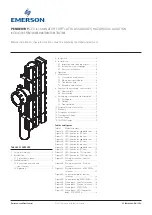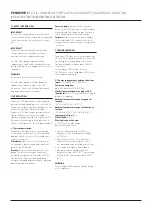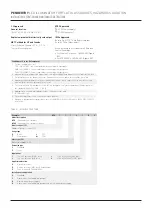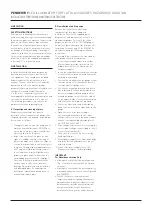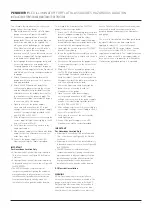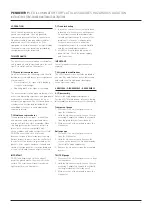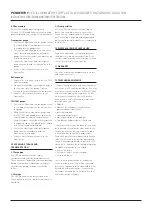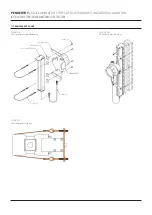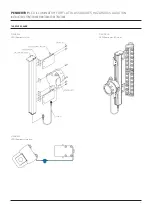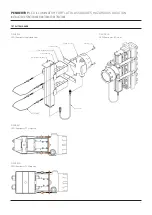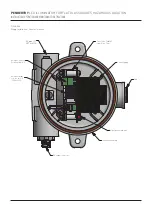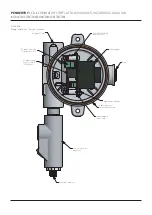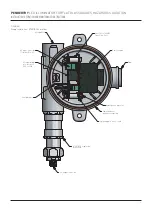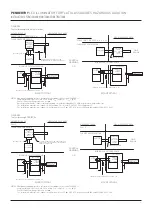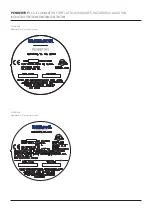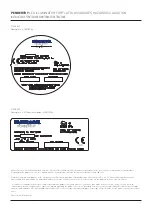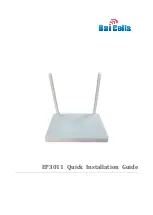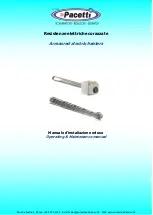
6
PENBERTHY
LED ILLUMINATOR FOR FLAT GLASS GAUGES, HAZARDOUS LOCATION
INSTALLATION, OPERATION AND MAINTENANCE INSTRUCTIONS
7.3 Troubleshooting
1. Internal or external corrosion could be an
indication of a harsh service environment.
An investigation should immediately be
carried out to determine the cause of the
problem. It is the user’s responsibility
to choose a material of construction
compatible with both the contained fluid
and the surrounding atmosphere.
2. All LED’s off could be an indication of
power failure. Check the power supply
and connections.
IMPORTANT
Contact manufacturer if any part needs to be
replaced.
7.4 Allowable modifications
The LED illuminator are not to be modified in
any way. Any modifications will void warranty
and could result in equipment damage or
serious personal injury.
8 REMOVAL - DISASSEMBLY - REASSEMBLY
8.1 Disassembly
Refer to the exploded parts diagram in
Sections 13-15 for additional reference during
disassembly and reassembly of the illuminator.
Transparent gauge
1. Disconnect the electrical power source
from the illuminator.
2. Hold the illuminator firmly. Loosen the wire
assembly. Completely remove the eyebolts
from the plate bracket (one side only).
3. Move wires out of the way and remove the
illuminator.
Reflex gauge
1. Disconnect the electrical power source
from the illuminator.
2. Hold the illuminator firmly. Remove the
screws on the back of the illuminator body
that hold the mounting bracket.
3. Remove the illuminator from the mounting
bracket.
TSL/TSM gauge
1. Disconnect the electrical power source from
the illuminator
2. Hold the illuminator firmly. Loosen the wire
assembly. Completely remove the eyebolts
for the plate bracket (only side only).
3. Move wires out of the way and remove the
illuminator.
7.2 Maintenance procedures
Cleaning the protective glass - wash with a
non-abrasive soap or detergent and water
using a soft, grit-free cloth or sponge. When
cleaning grease and oil from the protective
glass, use a chemical compatible with
silicone rubber only and a soft, grit-free cloth.
DO NOT use solvents such as acetone,
benzene, carbon tetrachloride, dry cleaning
fluid or lacquer thinners since they will attack
the surface of the protective glass and or the
gaskets. After surface has been cleaned and
rinsed of foreign particles, it may be dried with
a clean, soft, damp chamois or grit-free cloth.
IMPORTANT
DO NOT use hard, rough cloths on edge of
protective glass because they can scratch the
surface. The scratches will result in reduced
light output from the illuminator.
6 OPERATION
Check that all installation procedures
have been completed. Use only qualified,
experienced personnel who are familiar with
illuminators and thoroughly understand the
implications of all the instructions. If the
equipment is used in a manner not specified by
the manufacturer, the protection provided by
the equipment may be impaired.
7 MAINTENANCE
The user must create maintenance schedules,
safety manuals, and inspection details for each
specific installation of an illuminator.
7.1 Preventative maintenance
On all installations the following items should
be regularly evaluated by the user for purposes
of maintenance:
1. Protective glass, for signs of dirt build up,
scratches or breakage.
2. Mounting bracket for signs of loosening.
The user must determine upon evaluation of his
or her own operating experience an appropriate
maintenance schedule necessary for his or
her specific application. Realistic maintenance
schedules can only be determined with full
knowledge of the services and application
situation involved.

